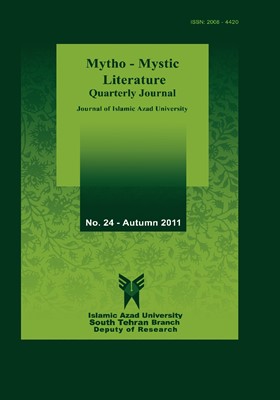-
-
List of Articles
-
Open Access Article
1 - Unity of Being in Sanā'ī and Ibn Arabī’s works: A Comparative Study
خدابخش اسداللهی بهنام فتحی -
Open Access Article
2 - Jāmi and the Problem of Love
بهاءالدین اسکندری -
Open Access Article
3 - "Hekmat Tajrobi" in the Persian Prose Sufi Literature up to the 8th century
سعید بزرگ بیگدلی فرزاد کریمی -
Open Access Article
4 - The Man, the Locus of Theophany of Quran: the Thoughts of Imadaddin Nasīmī
مهدی تدین نجف آبادی علی رمضانی -
Open Access Article
5 - The Symbolism of Nature in Shāhnāmeh: A Comparative Study
رحیم کوشش امیررضا کفاشی -
Open Access Article
6 - The Dreams of Shāhnāmeh: A Psychological Approach
خیرا... محمودی مهرنوش دژم -
Open Access Article
7 - Creation of a New Myth from an the Old Odyssey
علیرضا مظفری محمدنبی تولایی
-
The rights to this website are owned by the Raimag Press Management System.
Copyright © 2021-2025







